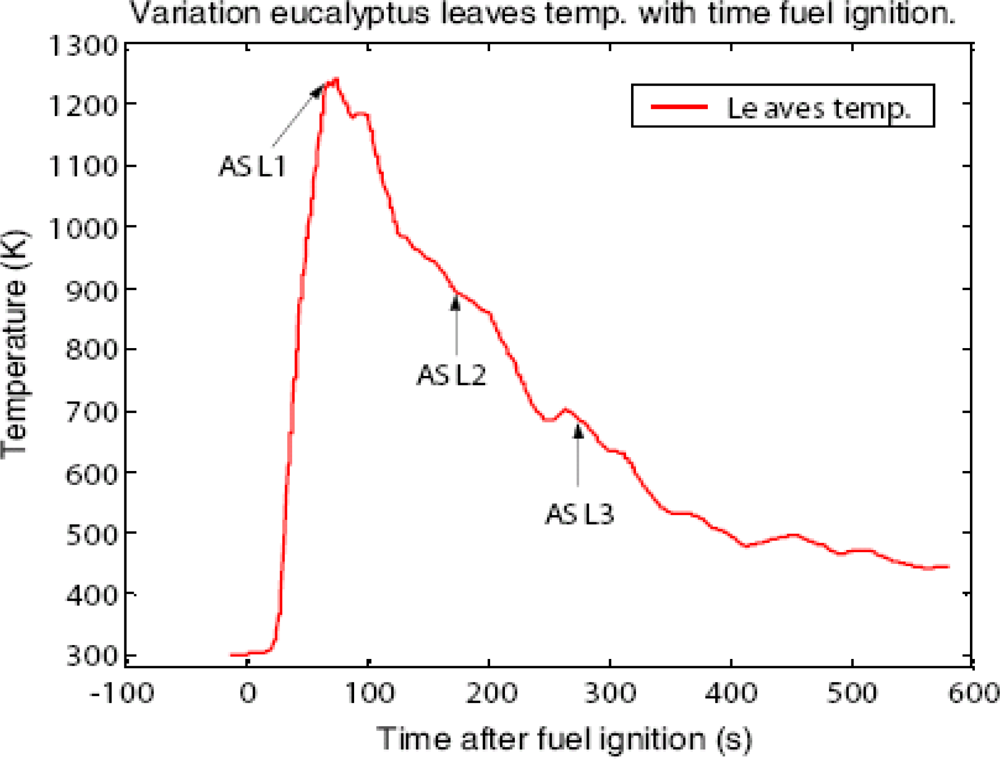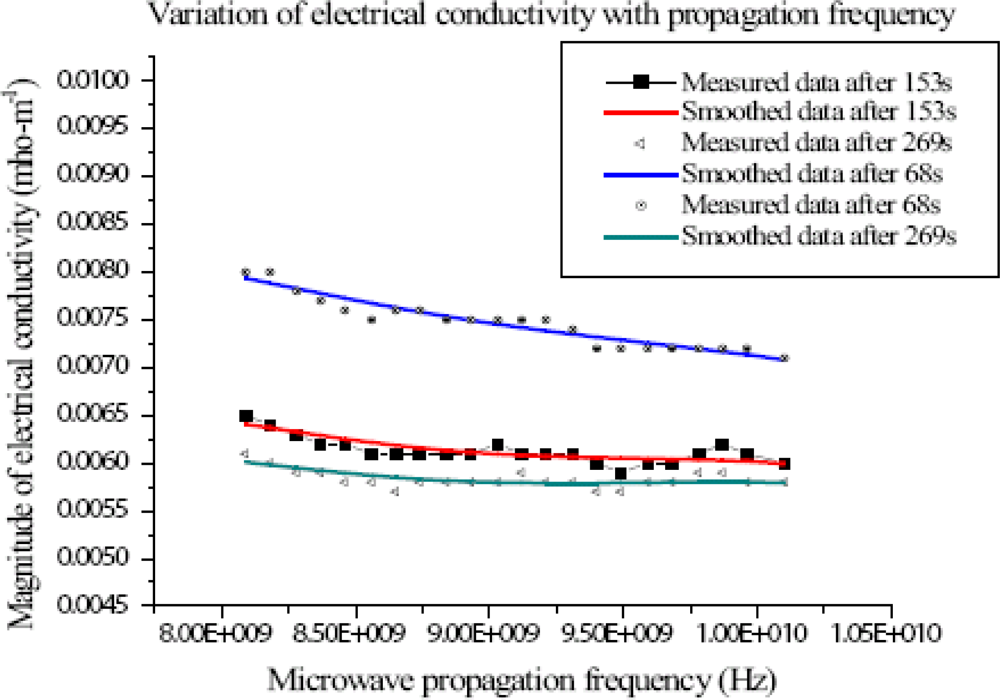Measurement of Electrical Conductivity for a Biomass Fire
Abstract
:1. Introduction
2. Ionization in Vegetation Fires
2.1. Electrical Conductivity of the Fire
3. Results and Discussion
3.1. Flame Temperatures
3.2. Electrical Conductivity of the Fire
4. Experimental Section
4.1. Network Analyzer and Burner System
4.2. Flame Temperature Measurement
4.3. S-Parameter Measurements
4.4. Determination of Propagation and Dielectric Constants from S-parameters
4.5. Determination of Flame Electrical Conductivity
5. Conclusions
Acknowledgments
References and Notes
- Boan, J. Radio communication in fire environments. Proceedings of Wars, Leura, NSW, Australia, February 2006; . [Google Scholar]
- Olson, RA; Lary, EC. Conductivity probe measurements in flames. AIAA Journal 1963, 6, 2513–2516. [Google Scholar]
- Schneider, J; Hofmann, FW. Absorption and dispersion of microwave in flames. Phys. Rev 1959, 116, 244–249. [Google Scholar]
- Radojevic, M. Chemistry of forest fires and regional haze with emphasis on southeast Asia. Pure Appl. Geophys 2003, 12, 157–187. [Google Scholar]
- Vodacek, A; Kremens, RL; Fordham, SC; VanGorden, S; Luisi, D; Schott, JR; Latham, D. Remote optical detection of biomass burning using potassium emission signature. Int. J. Remote Sens 2002, 23, 2721–2726. [Google Scholar]
- Sorokin, A; Vancassel, X; Mirabel, P. Emission of ions and charged soot particle by aircraft engines. Atmos. Chem. Phys. Discuss 2002, 2, 2045–2074. [Google Scholar]
- Varadan, VV; Jose, KA; Varadan, VK. In situ microwave characterization of non-planar dielectric objects. IEEE Trans. Microwave Theory Tech 2000, 48, 388–394. [Google Scholar]
- Kadaba, PK. Simultaneous measurements of complex permittivity and permeability in the millimeter region by a frequency-domain technique. IEEE T. Instrum. Meas 1984, 33, 336–347. [Google Scholar]
- Mphale, KM; Heron, M. Nonintrusive measurement of ionization in vegetation fire plasma. Eur. Phys. J. Appl. Phys 2008, 41, 157–164. [Google Scholar]



© 2008 by the authors; licensee Molecular Diversity Preservation International, Basel, Switzerland. This article is an open-access article distributed under the terms and conditions of the Creative Commons Attribution license ( http://creativecommons.org/licenses/by/3.0/). This article is an open-access article distributed under the terms and conditions of the Creative Commons Attribution license ( http://creativecommons.org/licenses/by/3.0/).
Share and Cite
Mphale, K.; Heron, M. Measurement of Electrical Conductivity for a Biomass Fire. Int. J. Mol. Sci. 2008, 9, 1416-1423. https://doi.org/10.3390/ijms9081416
Mphale K, Heron M. Measurement of Electrical Conductivity for a Biomass Fire. International Journal of Molecular Sciences. 2008; 9(8):1416-1423. https://doi.org/10.3390/ijms9081416
Chicago/Turabian StyleMphale, Kgakgamatso, and Mal Heron. 2008. "Measurement of Electrical Conductivity for a Biomass Fire" International Journal of Molecular Sciences 9, no. 8: 1416-1423. https://doi.org/10.3390/ijms9081416



